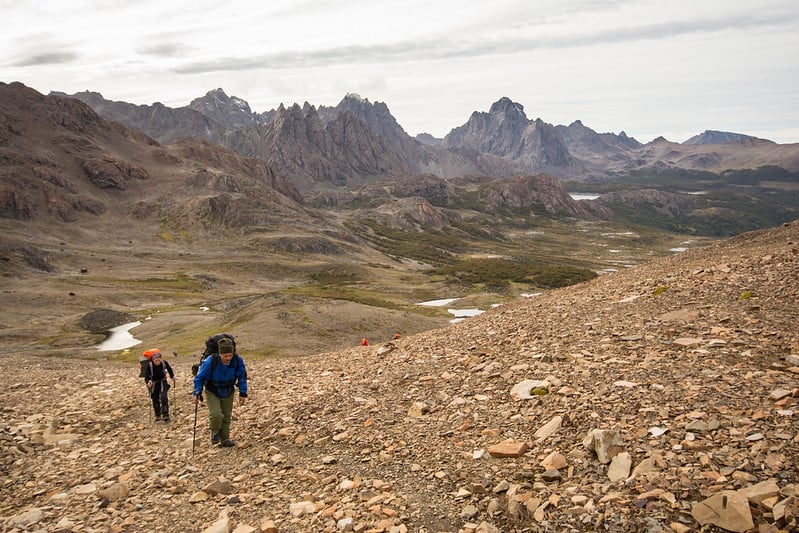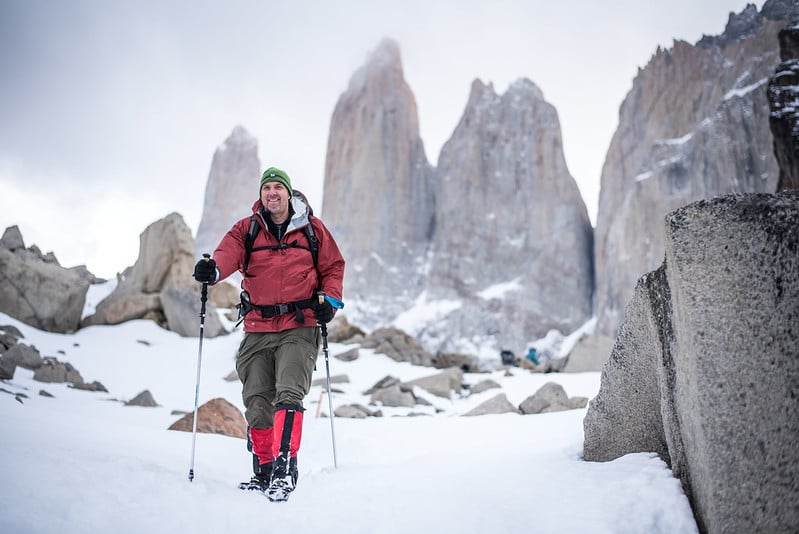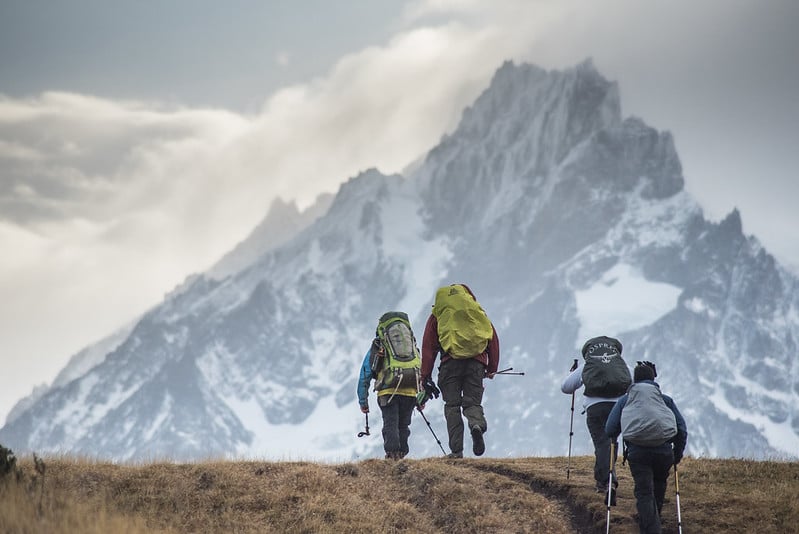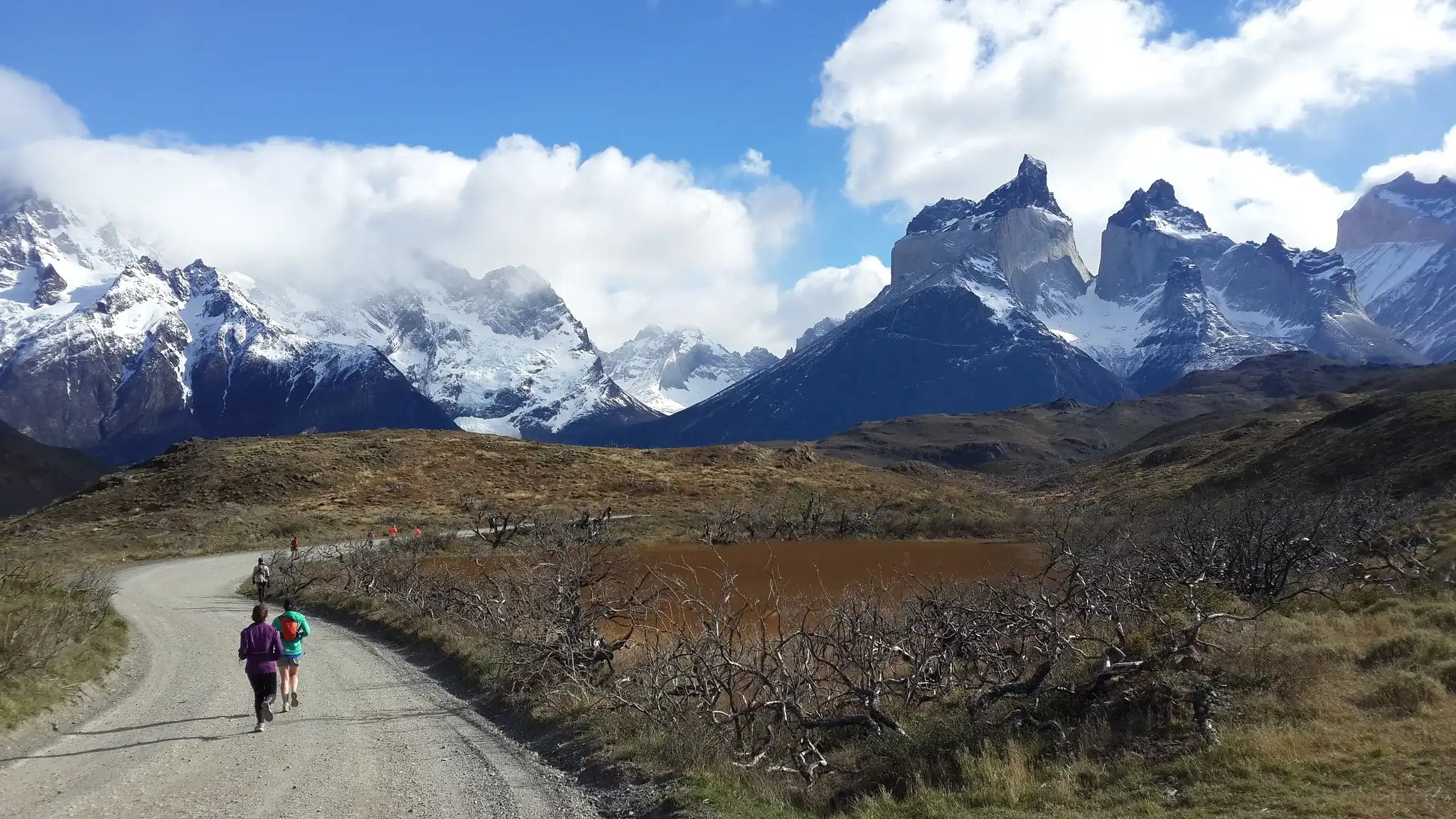Down on the hiking trails of Patagonia, hiking poles (or trekking poles if you prefer!) are a bit of a contentious issue.
Everybody knows they reduce the impact on your knees and improve balance and stability, making it easier to cross streams and slippery rocks. And we’ve all heard the contrary argument that they get in the way and add extra weight that you have to carry. But love them or hate them, there are lots of lesser-known facts about hiking poles that could help you make up your mind whether to bring a pair on your Patagonia hike or not. So if you’re setting off for the Torres del Paine Circuit or the W Trek (check out our full W Trek guide here), or you’re planning to explore Los Glaciares National Park, make sure you read our list of 25 things you never knew about hiking poles first!
1. Not all hiking poles were created equal - You can buy poles with or without special shock-absorbing technology and poles specifically designed for women with smaller grips made for ladylike hands.
2. There’s a right and a wrong way to wear the wrist straps - You should always place your hand up through the bottom of the strap loop rather than down through the top as this will give your wrists extra support.
3. One size doesn’t fit all slopes - You should shorten your hiking poles slightly when walking uphill and lengthen them when going downhill to compensate for the changes in gradient.
4. Hiking poles can be used for storage - By wrapping duct tape around your poles you’ll always have a supply at hand for any urgent mid-hike repairs.
5. They’re not just useful on the downhill - When tackling uphill climbs, hiking poles transfer some of your weight away from your legs to your back, arms and shoulders.

6. Poles can stop you tearing your trousers - You can use them to push thorny plants out of your way on the lesser-travelled trails around the back of the Torres del Paine Circuit to stop them snagging on your clothes.
7. They are generally made from steel or carbon fibre - Each material has its pros and cons.
8. Using poles can improve circulation - Holding your poles keeps your hands above your heart, which can stop them from swelling on a long hike.
9. Trekking poles can help to keep your feet dry - Use them to probe boggy ground before you step on it to avoid treading on ground so sodden that the water comes over the top of your boots.
10. Aluminum poles weigh between 18 and 22 ounces - Making them slightly heavier but cheaper than the carbon fiber option.
11. Many pairs of hiking poles are marked with a left and right hand - The grips are shaped to fit each hand like a glove, so make sure you get them the right way round.
12. Carbon fiber poles are more likely to shatter - They are less durable than aluminum poles but are lighter to carry.
13. You can get rubber tips to fit to the end of your poles - This not only protects the paths and helps to lessen the effect of path erosion in the delicate ecosystem of Patagonia, it will also prolong the life of your walking pole by preventing wear and tear.
14. Using poles spreads the stress of walking across more areas of your body - Hiking poles decrease the impact on your knees by increasing the impact on your arms, shoulders and back.

15. Most hiking poles are between 24 to 55 inches (60 to 139 cm) in length - They are adjustable to suit the needs of the individual and the terrain.
16. You should turn off the anti-shock function on your poles when going uphill - Otherwise you’ll be wasting energy when pushing off with your hands. Most shock absorbing poles allow you to turn off this option easily.
17. If your elbow are not at 90 degrees, your poles are the wrong length - To get the full benefits of your hiking poles your lower arms should be at a right angle to your body when gripping the poles.
18. The round disks near to the bottom of the pole are called ‘baskets’ - They prevent the pole from sinking into very soft ground or snow.
19. Carbon fiber poles weigh between 13 and 18 ounces per pair - This makes them lighter than aluminum poles but also more expensive.
20. You should remove the pole baskets when you don’t need them - On solid ground you don’t really need to use the baskets and removing them can reduce the impact of your poles on the environment.
21. Using poles may mean you use more energy - Since you’re swinging your arms as well as your legs you might use more energy overall. This could mean that you’ll need to take in more calories to keep walking but you’ll get an all-round body workout rather than placing too much stress on one muscle group.
22. You should grip the hiking poles lightly - Hanging onto your poles for dear life will waste precious energy and can also cause blisters.
23. You can get larger baskets to fit to your poles - These are great for helping you maintain your balance when walking through snowy or muddy terrain, both of which are real possibilities during both Chilean and Argentinean Patagonia treks.
24. Poles can improve your breathing - Using trekking poles brings your body into a more upright posture, raising your head and opening out your chest, which makes it much easier to breathe.
25. If it feels difficult you might be doing it wrong - Many people don’t get the benefit from their hiking poles because they’re using them incorrectly. When stepping out with your foot, you should always bring forward the opposite arm, and take one step for every pole step.

Now that you've read about hiking poles, it is time to sign up for a hike! Browse our full range of hikes in Patagonia now.















